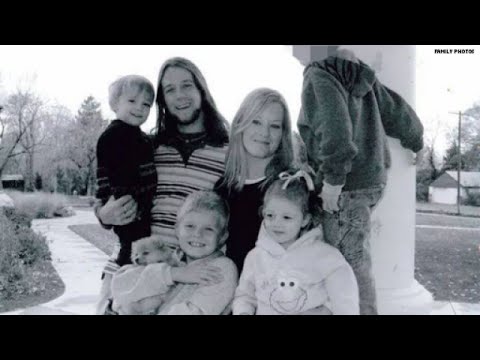10 The Sneaker Sneak
In 1979, David Dickson got court-martialed for a curious string of offenses. While stationed at a US Army base in Korea, he stole white sneakers from a number of different women. His motives were neither monetary nor malicious. Dickson simply had an insatiable lust for women’s white sneakers. Years later, that proclivity got him tried for murder. On November 30, 1984, 20-year-old Deborah Wilson was working late on a project in a Drexel University computer room in Philadelphia. That night, Dickson was working the graveyard shift as a guard employed by Wells Fargo. At the time, Wells Fargo had an agreement to provide security services for Drexel. Accordingly, it was Dickson’s job to watch over the computer room and usher Wilson to safety once she completed her work. The next morning, Wilson was discovered strangled to death in a nearby stairwell. Bizarrely, her white Reebok sneakers were missing. Police suspected Dickson’s involvement but couldn’t find any hard evidence initially. Then the clues began to fall into place. Before Wilson died, Dickson had repeatedly bragged to a coworker that his martial arts training gave him the ability to expertly choke the life out of someone. Dickson also continued to steal women’s shoes. In 1990, he burgled the home of Linda Howton and made off with two pairs of white sneakers as well as a photo of Howton wearing white sneakers. Perhaps most telling was a sexually graphic letter that Dickson composed on the seventh anniversary of Deborah Wilson’s murder. In the letter, he raunchily paid tribute to a woman wearing the same footwear as Wilson on the night of her death. Authorities later learned that the foot enthusiast often made inappropriate overtures to women in connection with their footwear. For example, Dickson had written a foot-related love letter to a female chemist at Drexel three years after Wilson’s death. When the chemist lodged an official complaint, she started receiving terrifying calls from a man who was presumed to be Dickson. The person in question threatened to rape her. These pieces of evidence and the testimony of a prison inmate who said that Dickson had admitted killing Wilson for her shoes helped to score a murder conviction. In 1997, a Philadelphia court sentenced 37-year-old Dickson to life in prison.
9 The False Prophecy
On the evening of September 27, 2014, 18-year-old Janson McGee returned home with his live-in girlfriend and quickly noticed that something was amiss. The residence—which was also occupied by Kristi and Benjamin Strack (McGee’s mother and stepfather) and the Stracks’ three young children—was eerily silent. The door to the master bedroom was also uncharacteristically locked. On the other side of that door lay a nightmarish family portrait. McGee’s mother, stepfather, and siblings had ingested a deadly chemical cocktail and died as a result. The deaths flummoxed authorities. The Stracks hadn’t left suicide notes or indicated their intentions to close friends or relatives. Not even McGee knew what vile fate his mother and stepfather had fashioned for themselves and their offspring. To solve the puzzle, police had to revisit a gruesome slaying that had occurred two decades earlier. In 1984, a man named Dan Lafferty cruelly cut short the lives of his sister-in-law and her daughter. Lafferty grandiosely envisioned himself as the prophet Elijah and asked his sister-in-law to join him in polygamous matrimony. When she refused, he sought deadly retribution. The grisly affair captivated a young Kristi Strack, who later sought out Lafferty after allegedly dreaming about him. Kristi and her husband, Benjamin, began seeing Lafferty in prison. For his part, the killer prophet imbued the pair with his insane worldview. According to Lafferty, the world was Hell. As an instrument of God, he would one day herald Christ’s second coming. Kristi and Benjamin took a strong liking to Lafferty, who later alleged that the three of them had fallen in love with each other. Prison officials halted that cozy dynamic after Kristi tried to pass off her brother as her spouse so that he could meet Lafferty. But the killer had already left his mark. In conversations with friends, Kristi and Benjamin denounced the escalating evil that they saw in the world. Over time, they became consumed by thoughts of an impending apocalypse. Law enforcement theorized that this preoccupation drove the couple to end their own lives and kill their children.
8 The Nurse’s Orders
During his nearly two decades as a nurse, Minnesota resident William Melchert-Dinkel repeatedly got himself in hot water for manhandling patients, ignoring their medical needs, and literally sleeping on the job. But Melchert-Dinkel’s shortcomings as a nurse paled in comparison to the years that he spent trying to convince people to kill themselves. As it turned out, Melchert-Dinkel delighted in hangings and suicides. He fed into this fixation by visiting suicide chat rooms and gaining the trust of depressed and ailing people. Posing as an empathetic female nurse, Melchert-Dinkel instructed those people on how best to commit suicide. He even formed suicide pacts with his advisees, hoping that they would keep their ends of the bargains. Two of Melchert-Dinkel’s downtrodden contacts, UK resident Mark Drybrough and Canadian student Nadia Kajouji, went through with their suicide agreements. In July 2005, the mentally ill Drybrough hanged himself from a ladder. Three years later, Kajouji drowned herself in a river. The nurse’s influence on those deaths went completely unnoticed until British woman Celia Blay befriended a depressed man who had a suicide pact with one of Melchert-Dinkel’s assumed identities. She dug around the Internet and found similar arrangements with the same clearly living person. Disturbed, Blay urged law enforcement to step in. After some initial hesitation, they tracked down Melchert-Dinkel and arrested him in accordance with Minnesota’s assisted suicide laws. In 2014, the 52-year-old Melchert-Dinkel was convicted of aiding in Drybrough’s suicide and attempting to assist in Kajouji’s. Melchert-Dinkel served an almost six-month prison stint and received 10 years’ probation. The following year, he was cleared of charges in Kajouji’s death after a court of appeals deemed that the nurse’s instructions to Kajouji were too vague to fall under Minnesota’s assisted suicide legislation.
7 A Flight Of Fancy
In 2001, Matthew Hardman was a 17-year-old paperboy with bloodsuckers on the brain. The North Wales teen frequented websites about vampires and read similarly themed magazines. But Hardman wasn’t seeking titillation or trying to be edgy. He earnestly wished to become a vampire and would stop at nothing in his quest for fanged immortality. The depths of Hardman’s instability became startlingly clear when he accused a 16-year-old German girl of vampirism. Hoping to rouse her inner Dracula, Hardman begged her to suck his blood. Unsurprisingly, she dismissed it as a joke—until Hardman pressed the girl’s face against his neck and commanded her to bite him. Two months later, Hardman passed the point of no return when he climbed through the window of 90-year-old Mabel Leyshon, a woman on his paper route. For reasons known only to him, he decided to sacrifice her at the altar of his depravity. It was a November day, and Leyshon was sitting in her favorite chair to watch television when the paperboy entered her home. A savage assault ensued. Hardman gored Leyshon 22 times with a kitchen knife and drank her blood from a saucepan. In ritualistic fashion, he cut out her heart and placed it on a silver platter. At her feet, he laid two pokers in the shape of a cross. Hardman ended by placing a single candle by his victim’s body and another on her mantel. Leyshon’s gruesome demise was uncovered on November 25, 2001, when a meals-on-wheels volunteer tried to pay the poor woman a visit. Hardman was arrested and charged with murder. Although he was clearly of unsound mind, his lawyers shied away from using an insanity defense because of the brutality that Hardman had displayed. The teen was sentenced to life in prison and was required to serve a minimum of 12 years.
6 The Gamer’s Endgame
As we’ve previously discussed, gaming and addiction go hand in hand. But for 21-year-old David Heiss of Frankfurt, Germany, Internet war games served as the gateway to a much more powerful narcotic of romantic infatuation. While frequenting the war games forum warcentral.com, Heiss developed a cloying crush on Joanna Witton. Witton and her boyfriend, Matthew Pyke, managed the war games forum from their home in Nottingham, England. Despite Witton’s attachment to Pyke, Heiss had no qualms about broadcasting his feelings throughout the forum. When he finally built up the courage to confront Witton directly, she kindly rejected him and tried to move on. Heiss, however, wasn’t so easily dissuaded. Heiss consumed every bit of information that Witton posted on her online journal and social media accounts. He hounded his unwilling love interest with romantic entreaties. This saccharine fawning built to bold action when Heiss traveled to England and showed up uninvited at Witton and Pyke’s home. He even finagled an overnight stay. Heiss’s impromptu sojourn was a bridge too far for Matthew Pyke. He blasted the creepy German in a 19-item declaration. Clearly not taking the hint, Heiss made a second surprise trip to Nottingham to make amends. This time, Witton rebuffed her unwanted suitor outright and asked him to back off altogether. Heiss blamed Pyke for the rebuke and convinced himself that the only way to win Witton’s heart was to massacre her boyfriend. Accordingly, he made another journey to Nottingham and lay in wait. Once Heiss got Pyke alone, Heiss stabbed his unwitting nemesis 86 times with a knife. Witton’s bleeding boyfriend tried to scrawl Heiss’s name on a computer in his own blood but perished before he could finish. Heiss fled to Germany. Police quickly pegged Heiss as Pyke’s killer. In 2009, Heiss was found guilty of murder and sentenced to life behind bars. He will be eligible for release after 18 years.
5 The Chase
Giselle Esteban became friends with Michelle Le at a high school in San Diego, California. Years later, when Esteban was in her late twenties, that amity soured when Le began interacting with a man named Scott Marasigan. Marasigan and Esteban were former lovers who had a six-year-old daughter. That history created a volatile situation. Esteban couldn’t stomach the possibility of her onetime paramour canoodling with her high school chum. Marasigan tried to assure her that his relationship with Le was strictly platonic, but Esteban didn’t buy it. When Marasigan and Le eventually parted ways, Esteban stubbornly insisted that the two were sleeping together. She bombarded Marasigan with ominous text messages and promised a hasty retribution. And if Esteban had her way, that reprisal would cost Le her life. Esteban was determined to hunt Le down. Her former friend now lived in a different city and was enrolled in nursing school. Esteban got the address by calling one of Le’s teachers under an assumed alias and pumping her for information. From there, Esteban visited the institution, pretended to be a prospective student, and lifted a security badge off an administrator. Then she used that badge to access student records. She garnered enough information to surmise that Le had started training at the Kaiser Permanente Medical Center in Hayward, California. Pretending to be Le, Esteban called the facility and inquired about Le’s schedule. Unfortunately, the con paid off. On May 27, 2011, Esteban finally cornered Le in the parking garage of the Kaiser Permanente Medical Center. The details of their encounter remain a mystery, but things ended with Esteban dumping Le’s lifeless body in Sunol Canyon. In court, Esteban’s defense was that the victim had goaded Esteban into killing her. But the defendant had left a trail of damning electronic bread crumbs. Cell phone records and witness testimony told a story of careful planning and murderous subterfuge. Esteban was convicted of murder and received a sentence of 25 years to life in prison.
4 The Friendly Foe
At age 19, Caroline Reed Robertson didn’t have much to smile about. The Australian teen struggled with her weight and endured regular bullying as a result. To make matters worse, she had to cope with her parents’ contentious divorce proceedings. To escape her misery, Robertson regularly imagined herself in someone else’s shoes. Those shoes belonged to aspiring dancer Rachel Barber. Robertson had known Barber for years and had even babysat her in the past. But as Barber blossomed into a comely 15-year-old, Robertson grew embittered. Barber had beauty, a tightly knit family, and a seemingly bright future. According to Robertson, she was “pure and perfect.” The unhappy Aussie teen consistently referenced Barber in her journal, reflecting on the ways that her own life might be different if she could live like the object of her envy. Those joyless ruminations mutated into a full-blown scheme to become the new Rachel Barber. To do that, reasoned Robertson, she needed to eliminate the original. In February 1999, Robertson saw her opening. Barber’s mother had refused to buy her daughter a $100 pair of shoes, citing the steep cost. So Robertson stepped in to offer the money in exchange for a favor. Barber had to complete a covert psychological study. A trusting Barber took the bait and went to Robertson’s apartment. There, the 15-year-old was drugged and then strangled to death with a telephone cord. Robertson kept Barber’s corpse in a wardrobe for two days before interring Barber in a shallow patch of earth. With that accomplished, Robertson believed that she could finally become Rachel Barber. Instead, she got slapped with a 20-year prison sentence. She was granted parole in 2015.
3 The Will To Win
On July 3, 2003, two amateur tennis players faced off in a low-stakes competition in France. On one side was 25-year-old schoolteacher Alexandre Lagardere. On the other was 15-year-old Maxime Fauviau. The winner would receive a ham. Unfortunately, what should have been a carefree affair took a dark turn when Lagardere was overcome by a sudden sickness. Unable to continue, he forfeited the ham and attempted to drive home. During his commute, the woozy schoolteacher lost consciousness and fatally crashed his car. Lagardere’s untimely ailment struck an all too familiar chord with France’s amateur tennis players. On more than 24 separate occasions between 2000 and 2003, competitors had become physically incapacitated while playing against either Maxime Fauviau or his sister, Valentine. Many who experienced acute nausea and double vision had to cede victory. But it wasn’t a coincidence. Someone had been furtively spiking the competitors’ drinks with a powerful sleeping aid. Unknown to Maxime and Valentine Fauviau, the culprit was their dad, Christophe, a former helicopter instructor for the French military. Christophe Fauviau became his children’s tennis coach and biggest cheerleader. But his commitment to their success ventured into unsettling territory. Every match felt like a personal crisis for Christophe. He later confessed: “When my children were playing, I was suffering. It was as if I were playing myself. I felt I was my child. I felt something crying inside me.” To quell his internal sobbing, Christophe resorted to drugging players with the tranquilizer Temesta. He had discovered the disorienting effects of Temesta firsthand while taking it to treat his own insomnia. Recognizing the drug’s potential to make the other players dizzy, the deranged tennis dad started adding it to Coca-Cola and other beverages that he gave to at least 27 players. One of the victims was just 11 years old. When Christophe’s tampering cost Alexandre Lagardere his life, concerned players began voicing their suspicions about the difficulties that they had experienced while competing against the Fauviau children. As evidence mounted, Christophe had no choice but to confess. In 2006, a French court convicted the 46-year-old father of manslaughter. He received an eight-year prison sentence.
2 A Mother’s Loss
In 2007, Oregonian Korena Roberts was anticipating the birth of her third child when misfortune callously struck. Roberts’s baby was stillborn. The loss took an immeasurable mental toll on the mother’s psyche. Seemingly incapable of accepting reality, Roberts sewed baby clothes and invested in baby formula. She watched childbirth videos online and bought parenting magazines. She even purchased a stroller and assembled a crib in her front yard. For a year, she told others, including her boyfriend, that she was expecting another child. Though she wasn’t pregnant, Roberts had every intention of having a third baby. Rather than risk another tragedy, however, she decided to take someone else’s child. Toward that end, she started reaching out to pregnant women on Craigslist who were looking to exchange baby clothes. There, Roberts found 21-year-old Heather Snively, who brimmed with kindness and was quick to trust strangers. And at eight months pregnant, she was almost ready to deliver the baby that Roberts so desperately craved. After about a week of amicable interactions, Roberts pounced. In June 2009, she lured Snively to her home and proceeded to beat the 21-year-old with a collapsible police baton. Once her victim was thoroughly incapacitated, an overly eager Roberts plunged a kitchen knife into the woman’s pregnant belly and grasped the child inside of it. Much to her horror, Snively’s baby wasn’t breathing. History had repeated itself in hideous fashion. Roberts called her boyfriend in a panic. He rushed home and tried in vain to revive the dead child before paramedics took over. At the hospital, the staff easily recognized that Roberts hadn’t given birth to the child. Later, authorities found Snively’s corpse crammed into a crawl space at Roberts’s home. Roberts pled guilty to murder and tearfully accepted her punishment: life imprisonment without parole.
1 The Control Freak
Many teens grapple with feelings of angst and inadequacy, but Nathan Matthews of Gloucestershire, England, was a unique case. Born with the debilitating musculoskeletal disorder fibromyalgia, Matthews spent his youth in physical and psychological agony. Seemingly inconsolable, he would spend the bulk of his teenage years alone in his room. Much of Matthews’s solitude was spent watching violent porn. Over the course of that viewership, he developed a taste for teenage girls, whom he wished to violently control. Those urges became reality when Matthews started dating Shauna Hoare. Matthews was in his early twenties and Hoare was merely 14 or 15 when the two became romantically entwined. Their relationship was marked by a horrifying power dynamic. Matthews demanded sex acts in exchange for kindness and would force Hoare to beg for food. He would verbally and physically prey on his young mate, at one point going so far as to choke her. When Hoare moved in with her domineering beau, she became cut off from the rest of her family. And when she worked toward a university degree, Matthews ultimately forced her to stop after he grew uncomfortable with her interactions with men. He had no such concern about Hoare’s feelings toward other women, however. Like Matthews, Hoare indulged in violent pornography. The two regularly exchanged messages about their favorite guilty pleasure and openly contemplated kidnapping teenage girls. Their base urges would boil over into shocking criminality when the pair stopped merely wishing to prey on someone. They ultimately set their sights on Matthews’s 16-year-old stepsister, Becky Watts. Matthews had lusted after Watts for years, going so far as to surreptitiously fondle her when she was just eight. But eight years later, he would do far worse. One February, 19, 2014, he and Hoare entered Watts’s room and suffocated her. Not yet satisfied, they stabbed her lifeless body 15 times and brought it home with them. The following morning, Matthews cut Watts’s corpse into eight pieces with a circular saw. The remains would be hidden in the couple’s garden but then moved to a shed after authorities started an intense investigation. Police finally discovered what became of Becky Watts on March 3. In November 2015, a UK jury found Nathan Matthews guilty of murder. He was sentenced to life imprisonment with a 33-year mandatory minimum. Shauna Hoare, who had clearly been steered by her severely abusive boyfriend, was convicted of manslaughter and sentenced to 17 years. The presiding judge, overwhelmed by emotion, openly wept while delivering the sentences.
























